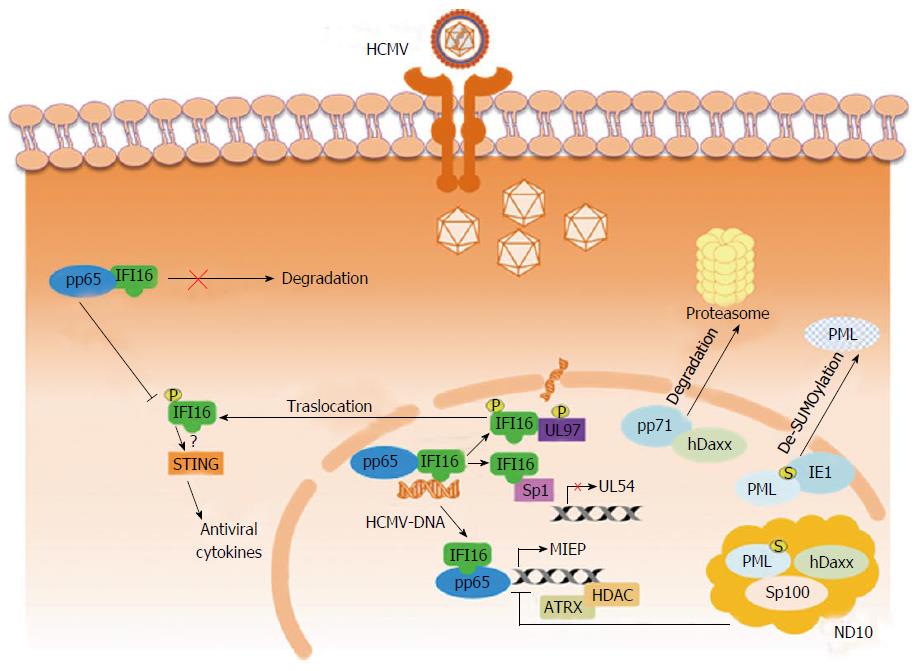Copyright
©The Author(s) 2016.
Figure 1 Simplified model of host restrictions against human cytomegalovirus and mechanisms of viral escape.
IFI16 recognizes HCMV-DNA in the nucleus. In the early phases of infection, HCMV-pp65 hijacks IFI16 to activate MIEP expression; later on the complex IFI16-pp65 blocks HCMV replication by inhibiting the action of Sp1 on UL54 promoter. IFI16 is not degraded, but it was stabilized by its interaction with pp65. To evade IFI16 antiviral activity, HCMV induces nuclear translocation of IFI16 upon recruitment of HCMV kinase UL97 to IFI16. In the cytoplasm, IFI16 activates STING-mediated antiviral cytokine expression. ND10 components (hDaxx, Sp100, PML) limit viral replication by silencing viral IE genes, inducing a transcriptionally inactive chromatin state of the MIEP via recruitment of ATRX or HDACs to the viral DNA. The viral pp71 binds to hDaxx for proteasome degradation and relieves MIEP repression. Degradation of hDaxx is preceded by the release of ATRX from ND10. IE1 promotes the dispersion of the ND10, by de-SUMOylation, with the consequent inhibition of PML oligomerization. HCMV: Human cytomegalovirus; IFI16: IFN-γ inducible protein 16; PYHIN: Pyrin/HIN domain; AIM2: Absent in melanoma 2; MIEP: Major immediate early promoter; ND10: Nuclear domain 10; ATRX: Alpha thalassemia and mental retardation syndrome X-linked; PML: Promyelocytic leukemia.
- Citation: Landolfo S, De Andrea M, Dell’Oste V, Gugliesi F. Intrinsic host restriction factors of human cytomegalovirus replication and mechanisms of viral escape. World J Virol 2016; 5(3): 87-96
- URL: https://www.wjgnet.com/2220-3249/full/v5/i3/87.htm
- DOI: https://dx.doi.org/10.5501/wjv.v5.i3.87









